These posts are not for foraging. They are intended for entertainment and intellectual satisfaction only. These posts are not a field guide nor comprehensive in any way - their accuracy is not assured in any way. Do not eat wild mushrooms unless you are a professional, have substantial professional assistance or have a wealth of personal experience with a specific species. Do not make any foraging decisions based on these posts. To do so could be dangerous or life threatening.
These Posts Contains No Information Regarding Edibility Or Toxicity

An extraordinarily beautiful mushroom species.
Continuing our foray into the Coprinoid group of mushroom species, today we tackle a species of particular physical beauty. From the genus Coprinellus, meet C.micaceus.
Like so many "inky caps", C.micaceus seems to appear from out of nowhere, and disappear almost as quickly. But, unlike many other Coprinoid mushrooms,
C.micaceus grows in robust, gregarious colonies, with moderately sized and fleshy caps.
The name "micaceus" is a reference to the "mica-like" white particulate which patterns the fresh, young mushroom cap. The white particulate is clearly, and gorgeously, visible in the above photo.
If we zoom out a bit you can see the larger colony growing in two or three moderately sized clumps of caps.
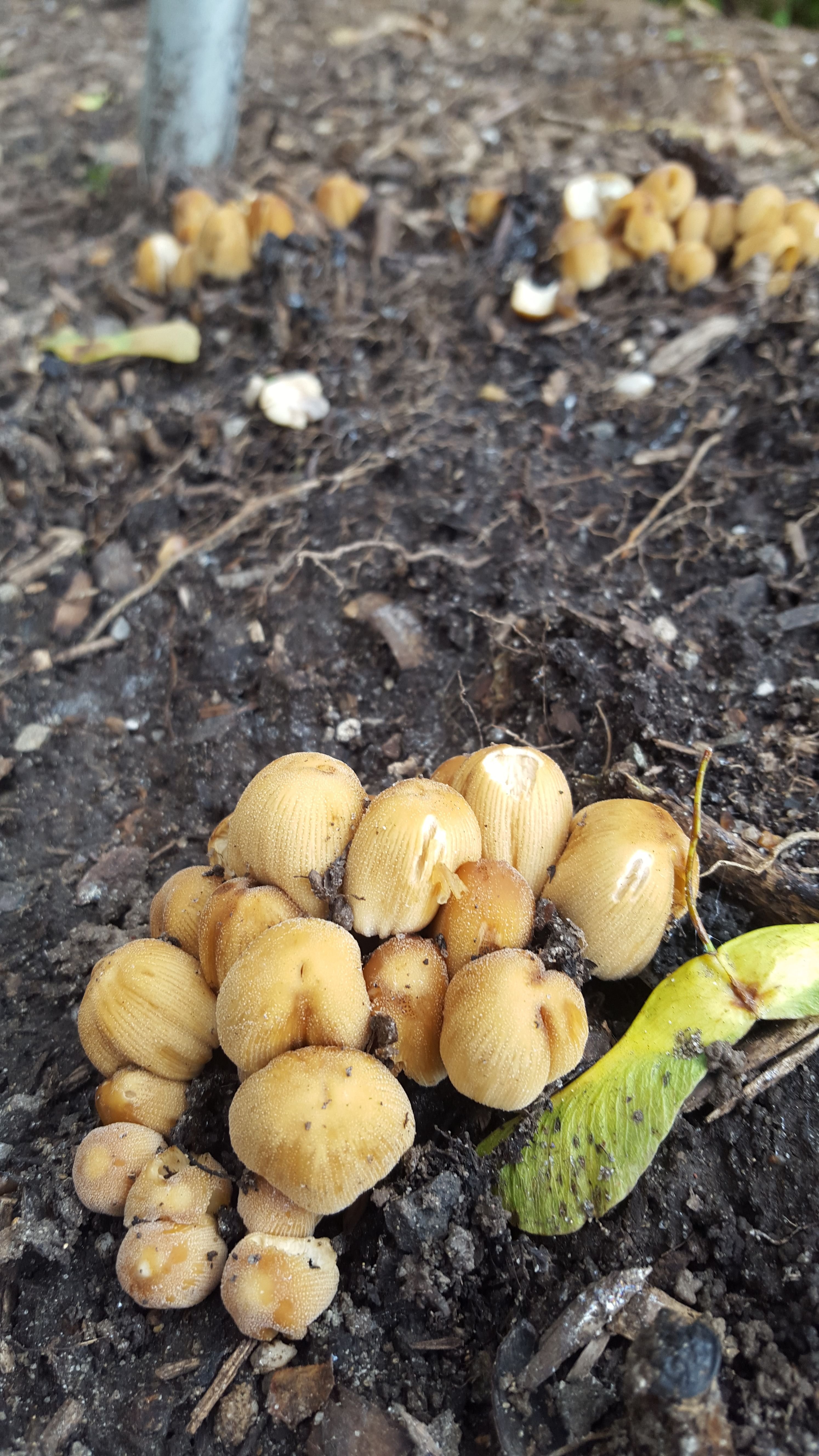
These all popped up, quite unexpectedly and quickly, in the endlessly surprising area in front of my apartment.
C. micaceus is saprobic and grows on decomposing wood. However, multiple accounts describe it as often appearing terrestrial when it bursts up from buried pieces of wood or rotting tree roots.
Although they look terrestrial in these photos, the front yard of my apartment complex has tree roots running throughout it from a number of living and dead old growth trees. Plus it has undergone multiple landscapings, and been resurfaced with a thick layer of wood chip mulch. It is a safe bet that these guys are growig on buried wood in some form or another.
Each cluster of mushrooms consists of around 15 or more individual caps, all at slightly different levels of maturity. The baby caps are only 1cm or less across while the more mature caps are 2-3 cm while still in their conical shape.
At this point in their life cycle, when young and fresh, the mushrooms are plump and firm, perfectly tan brown with a lighter center spot, the wonderful white decorations and a pleasa, simple mushroomy odor.
But C.micaceus has more surprises up its sleeve. The pristine, otherworldly prettiness of the young mushroom quickly disappears and is replaced by something very different.
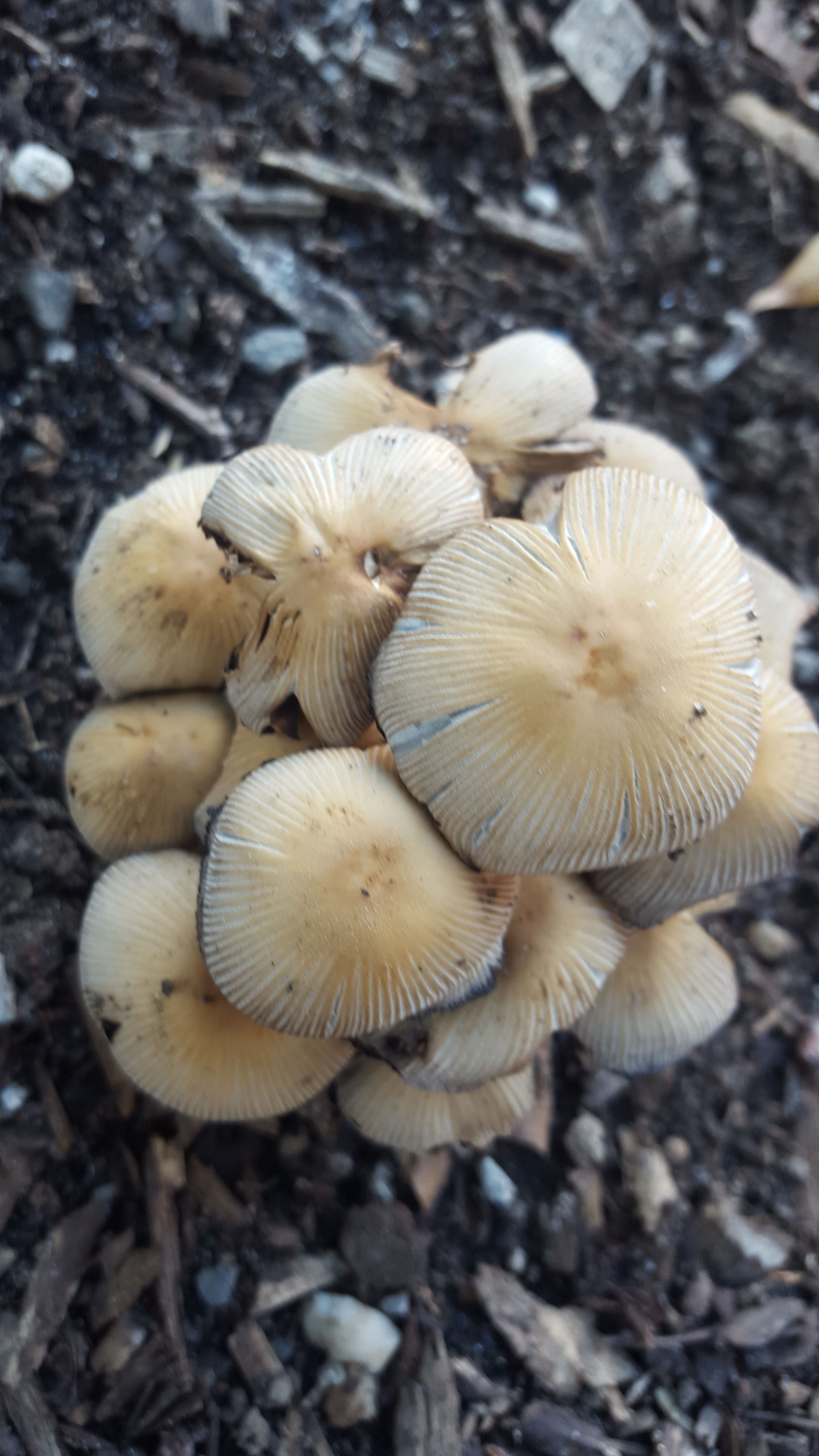
These are the same mushrooms the next day!
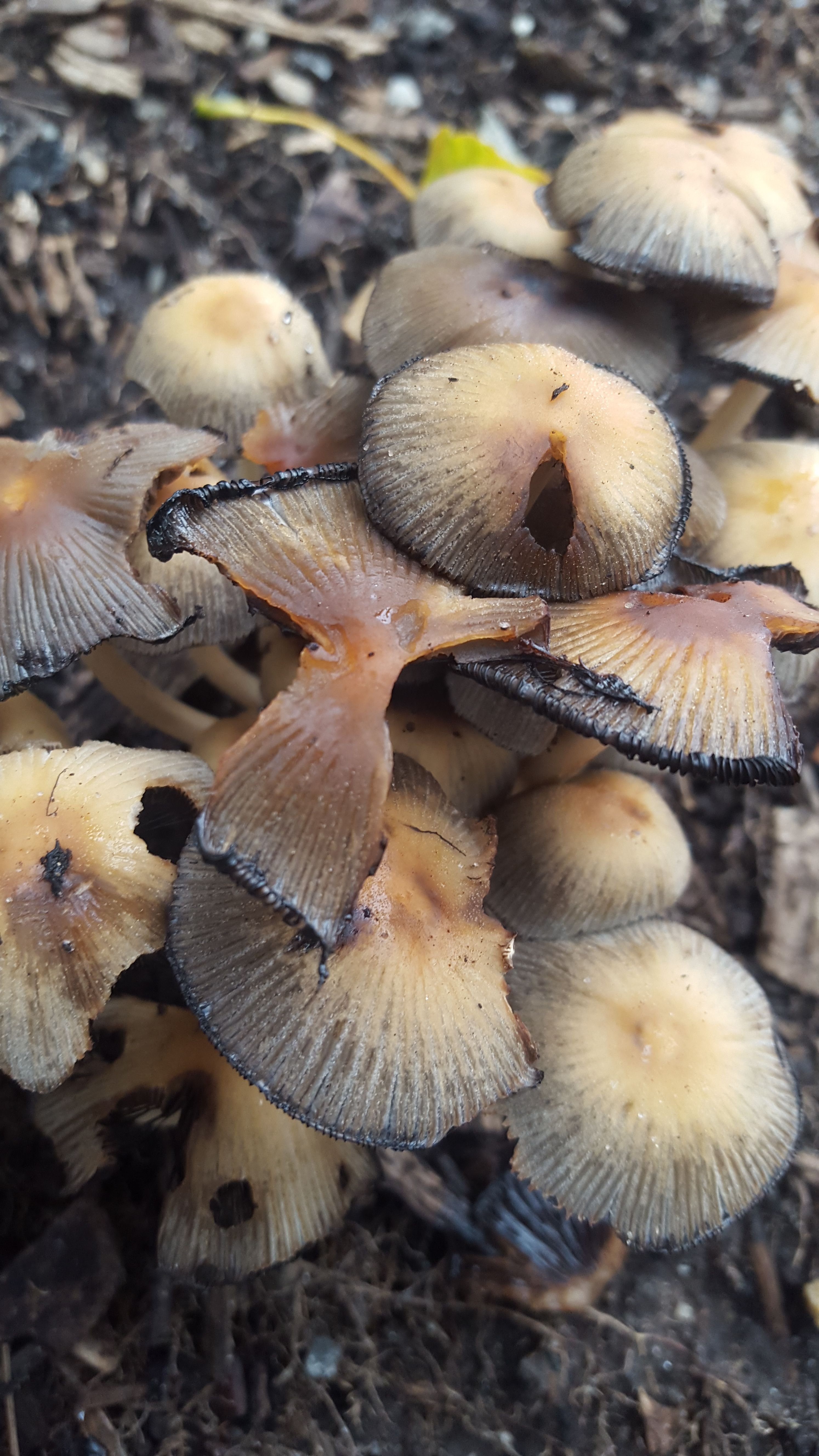
The transformation from conical youth, to convex maturity, into deliquescence is unrelenting.
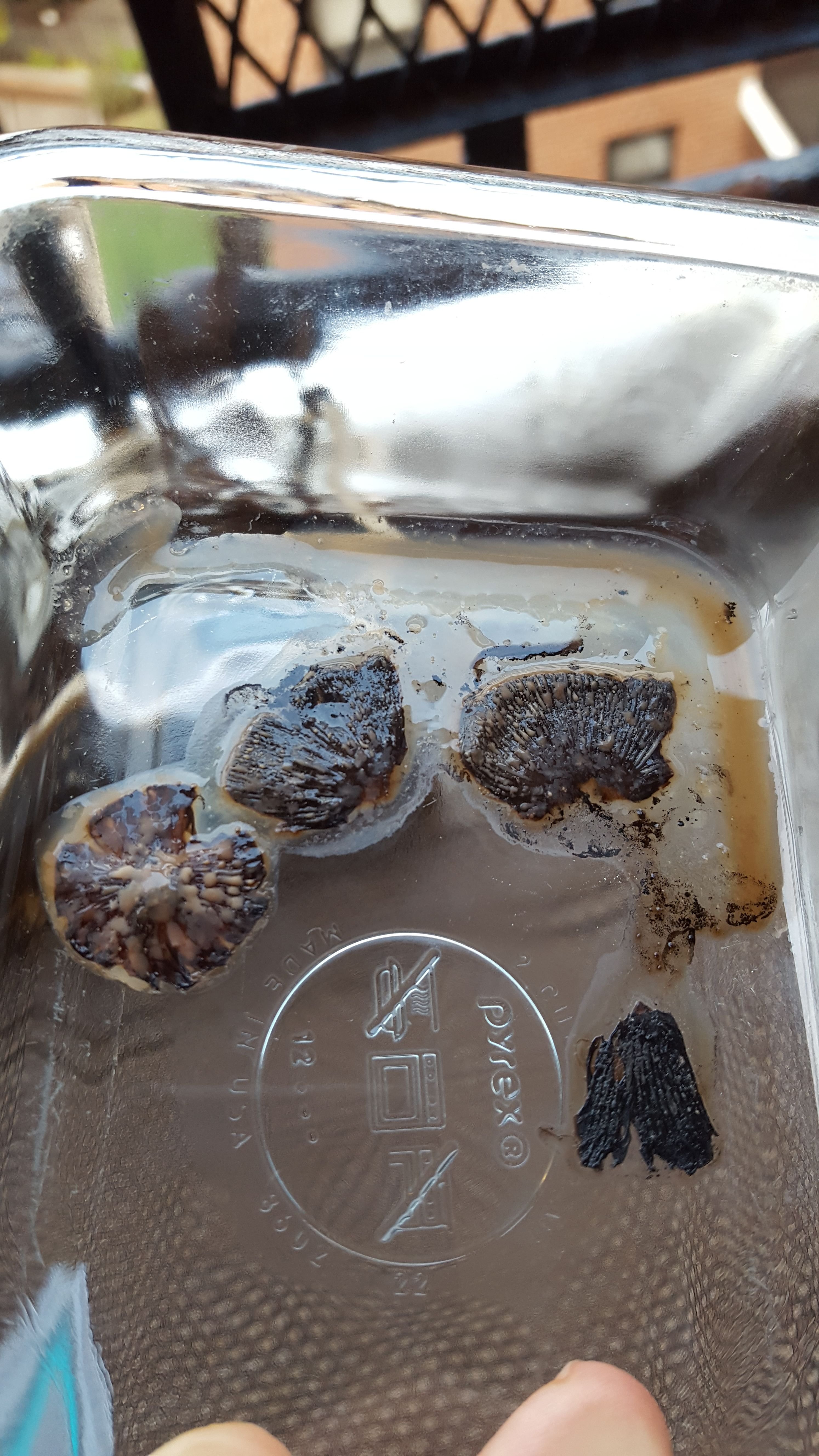
Until two days later, all that remains is black mush, tainted water and millions of black spores
This is the life cycle of C. micaceus, like so many other Copronoid species. It highlights perfectly the reason behind the moniker "inky cap." Few mushrooms are as ephemeral in their life cycle, or as beautiful, in life and in death, as C. micaceus and its many close and distant cousins.
Although we have a broadstrokes conception of C.micaceus, let's now dive deeper into the details
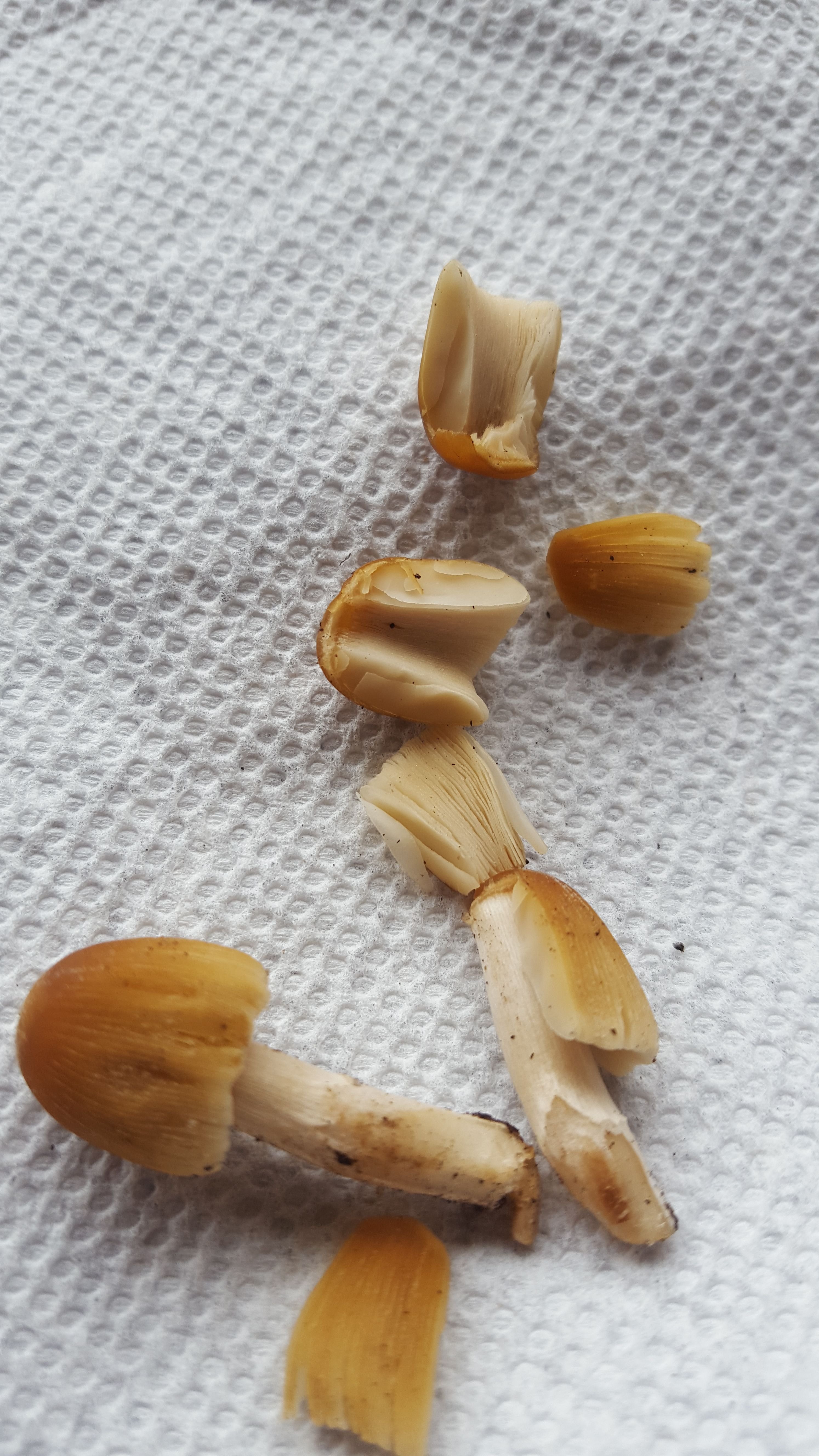
First lets see what we can about these very young caps.
Off white, almost cream colored gills that are fairly well crowded, waxy, break easily and are fairly wide, a couple of mm across. The Stem is the same color as the young gills, which in this case are attached to the stem at the top. The pretty amber brown of the cap itself is very thin and, as you can see in the cross section, the actual flesh is minimal.
Let's take a look at an older cap
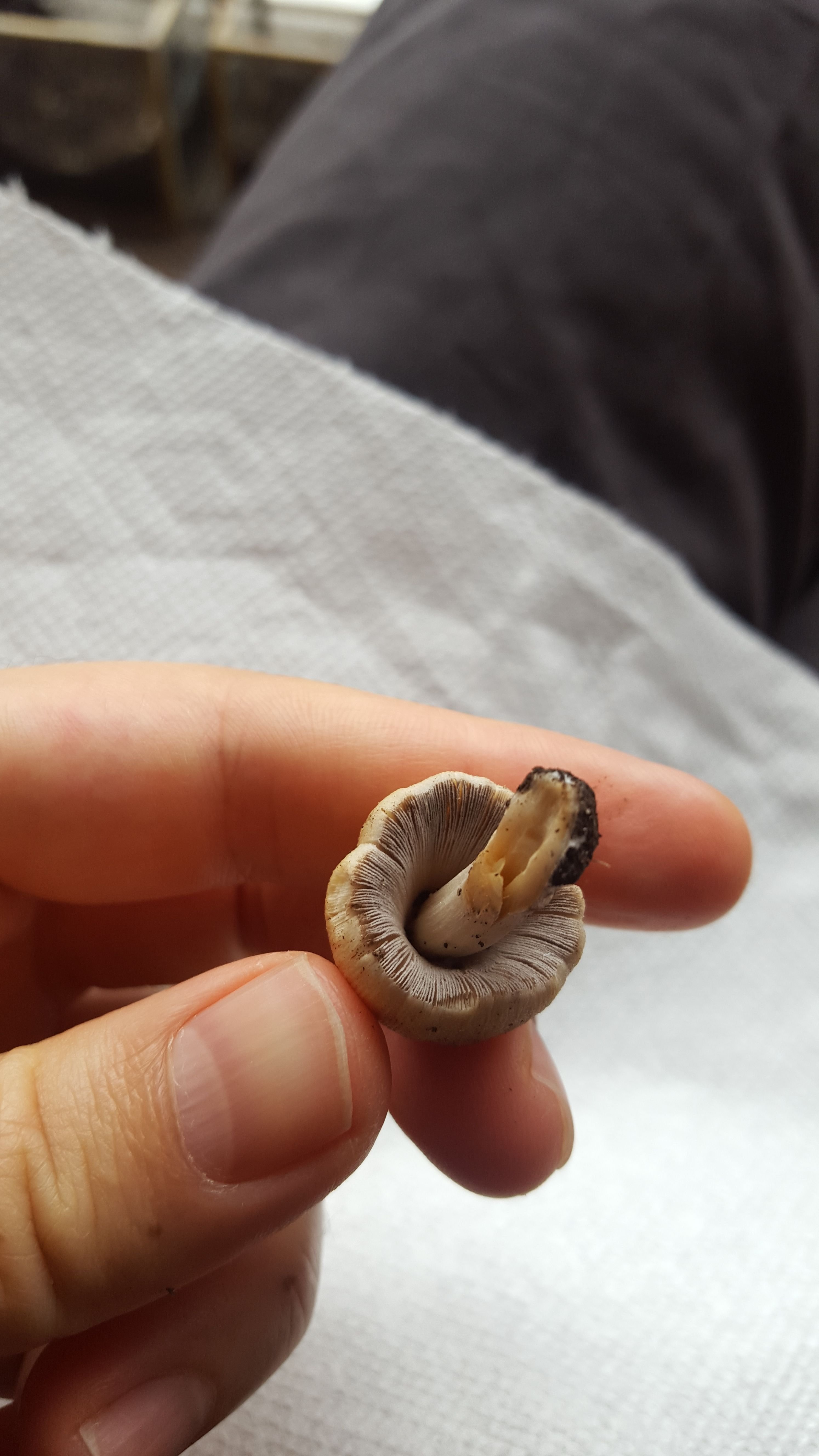
This mushroom is about the half way point in C.micaceus's maturation cycle
The whole mushroom has ballooned in size, more than doubling in terms of overall volume. The flesh has thickend up substantially, although the bulk of the material is still gills. The gills themselves have darkened significantly, which we will see more clearly in the picture below.
This photo also give the first insight into the internal workings of the stem, which as you can see is hollow in the center. It also depicts a small chunk of dirt, apparently interlaced with a hint of mycelium, stuck to the base of the stem. All of these stems were quite smooth, although Kuo indicates they can sometimes be slightly fibrillose or textured.
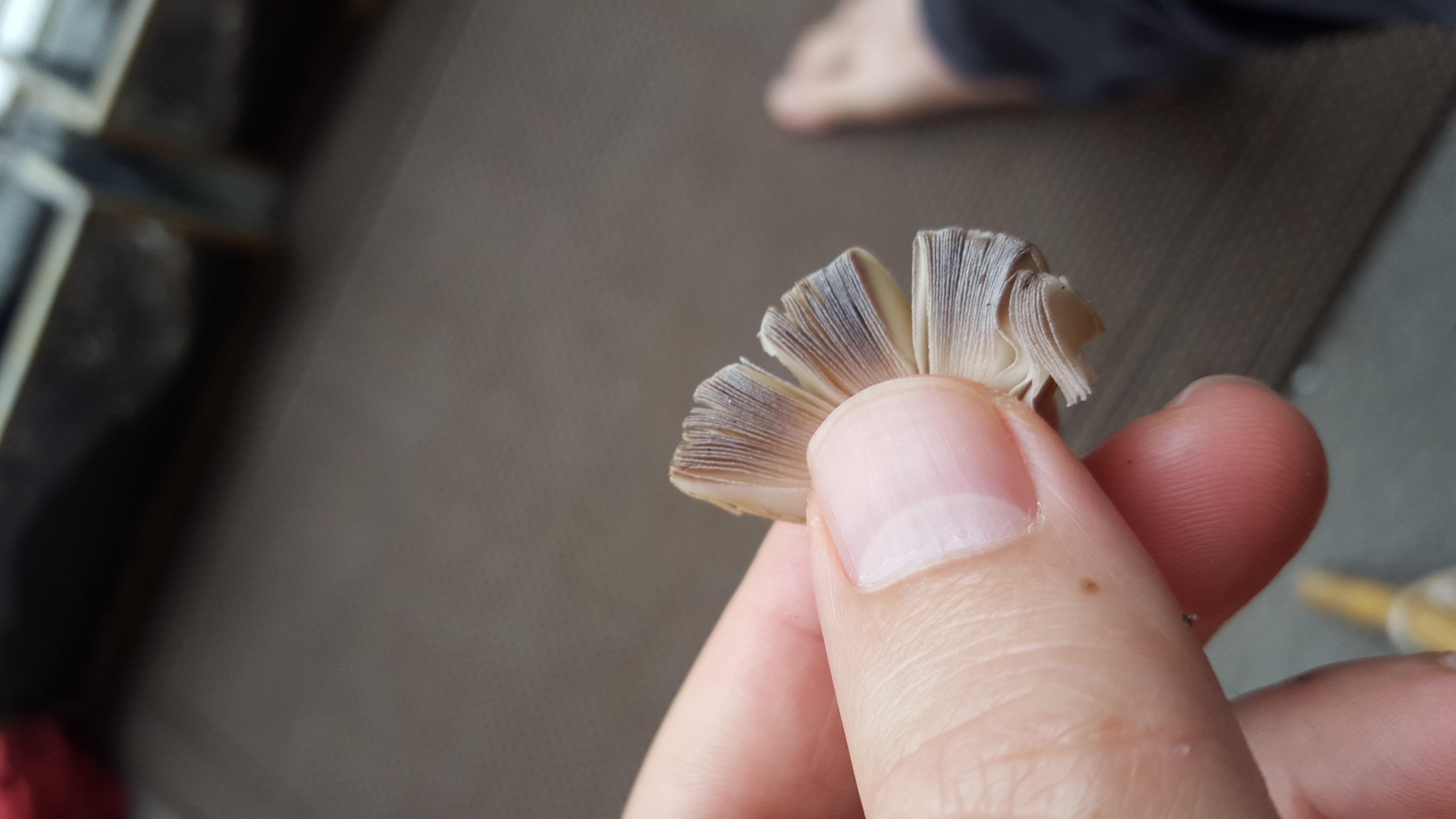
Here I've taken the mature cap and exposed the gills for better observation.
You can see that the color has darkened substantially and the gills are less crowded. This is the start of the inevitable blackening, and subsequent deliquescing, of the gill entirely.
At this point, you can actually get a spore print from this mushroom. In fact, I did just that, in the normal way, and the spores came out fairly quickly and in volume. However, I did not photograph the print at this point, and instead forgot the mushroom cap on top of the print. The cap then liquified into ink, leaving the "print" you can see above.
Now lets have a look at KOH results
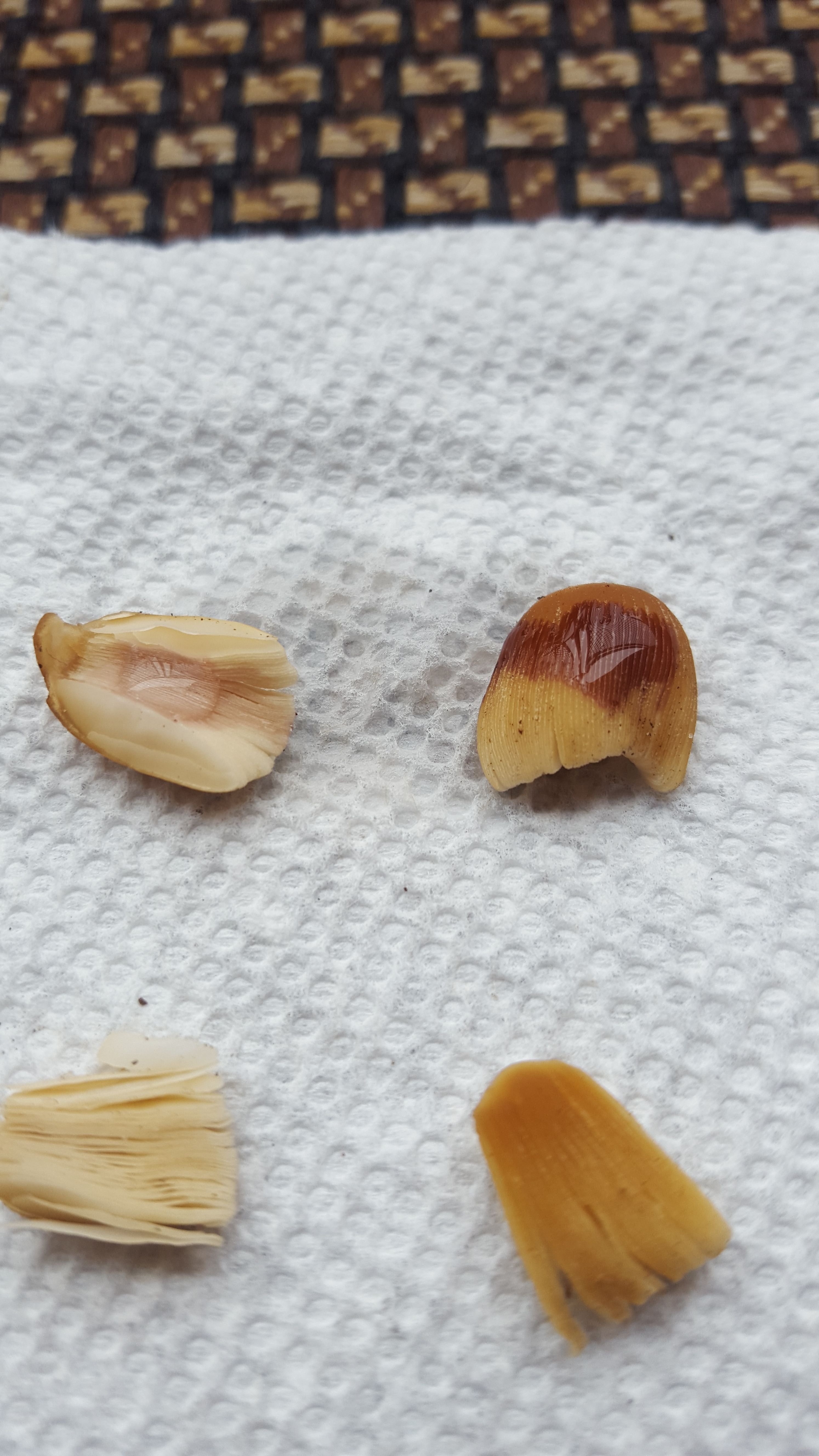
The cap on top has KOH solution on it, the cap below does not.
The cap and stem surfaces of this species all resulted in an obvious and fast acting discoloration in response to KOH, and a lesser such response to Ammonia. In case you're wondering, I also do these tests with distilled water alone just to make sure that the mushroom is not simply changing color when wet. I can assure you, this is a chemical rather than purely optical reaction.
Interestingly, although C.micaceus is well documented and understood - hence the several qualityh sources below - none of the primary sources I often use made any mention of KOH reactivity with this mushroom. Undeterred, I scoured the internet for a reference to the KOH reactivity, and eventually found the information. On an Italian mycology forum, an english speaking mycologists work had been translated into Italian and, in addition to a very detailed write up, made the following indication:
marroni in KOH
Brown in KOH
It's easy to forget that the United States, and english speaking biologists and enthusiasts, have no where near a monopoly on the study of mushrooms.
The stem has a similar response
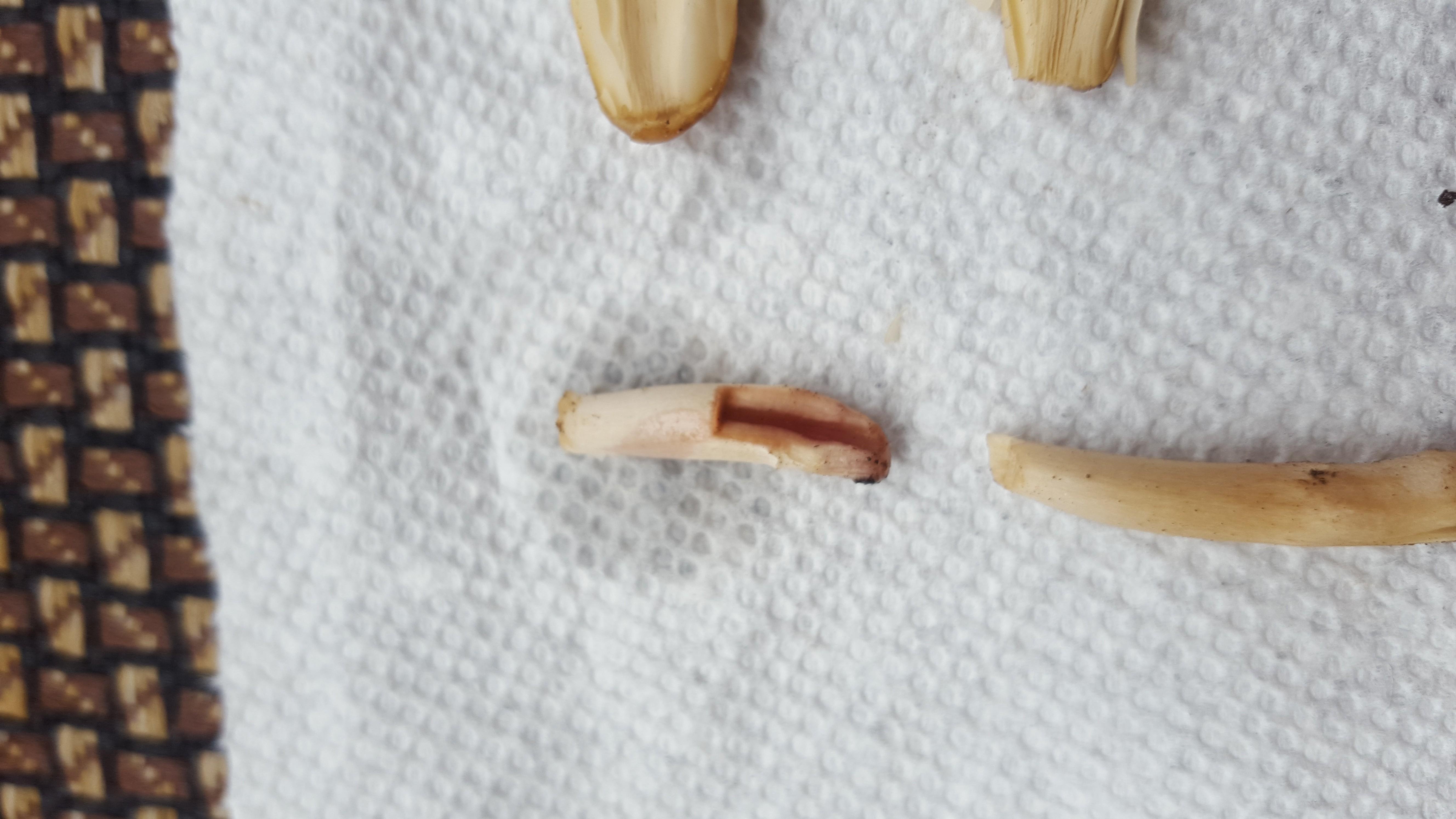
Here's I've cross sectioned a portion of a stem and applied a drop of KOH solution
The response is less than the overt brown on the cap, and a bit of a pinker, redder color. The only portion of the mushroom which did not repsond immediately to KOH were the gills. However, as the gills have a waxy character, I believe they are mildly hydrophobic and do not readily absorb the aqueos KOH solution. After some time with the droplet on them, they did discolor slightly, but never to the extent as the other portions of the mushroom.
As always, I took a video of the KOH reaction so you can get a better sense of the speed and nature of the initial transition
This colony of C.micaceus mushrooms was a pleasure to find and examine. I expect they may appear next season in the same place or just nearby, and so I will be keeping an eye out around this time next year. As always, I suggest you do the same.
MACROSCOPIC CHARACTERISTICS
Cap = Conical when very young and half way to maturity, in a smaller range of perhaps 2-5 cm in width at this point - expanding to a convex/umbrella like shape in maturity and widening as a result to a larger range, which Kuo puts as far as 15cm across. None of the caps I saw neared that, but maxed out at around 6 or 7 cm. The young caps can vary in color according to multiple sources, but a lighter amber brown appears to be most common, as in this case, with a lighter circle of color at the top center of the cap. When very young, the caps have a very pretty pattern of small, shiny white particles, which resemble mica and are responsible for the species name. However, the rain can easily wash these particles away and mature caps lose them entirely, becoming lighter in color, with clear striations developing as they become more convex, eventually splitting and delisquescing into black ink.
Spore surface = Gilled - whitish tan colored when very young, blackening progressively in old age, eventually turning all black and the deliquescing into ink. Crowded and waxy when young, less sp as the mushroom ages.
Flesh = Thin, whitish when young. Deliquescing with the rest of the cap to black when mature.
Stem ("stipe") = Ranges from 2 - 8 cm, and grows taller as the mushroom matures. A few mm thick. Whitish and hollow. Fibrous but not tough.
Spore Print = Spores are black - gills deliquesce. A spore print can be collected, but you need to time it just right to avoid the entire cap melting on top of it.
Ecology ("How it grows.") = Saprobic - grows on dead hardwood logs, roots, or, as in the case here, buried wood below the surface, which makes the mushroom look like it is purely terrestrial, which it is not. Growing gregariously in clusters of usually over a dozen individual caps.
Distribution = Can be year round, but usually not in winter. Found all over North America, obviously in urban environments as well - since that's where I found mine - but can grow anywhere there is hardwood to sprout from.
KOH reactivity = Brown on the cap, brownish/pinkish/reddish on the stem, slowly browning on the waxy gills.
Other = Very interesting twist here - Kuo points out that although the mushrooms featured here are generally referred to as C.micaceus by most when found in North America, they are quite likely one of several independent species which, for the super detailed mushroom hunter, are technically distinguishable one from the other. One mycologist has basically devoted his lifes work to the study of various Coprinoid mushrooms, and his awesomely specific website can be found here, in case you want to work this particular group of mushrooms down to a super specific species.
THIS POST IS NOT INTENDED FOR FORAGING PURPOSES AND TO USE IT FOR THOSE PURPOSES WOULD BE DANGEROUS. DO NOT HUNT WILD MUSHROOMS WITHOUT RELYING ON A COMBINATION OF PROFESSIONAL FIELD GUIDES, IN PERSON PROFESSIONAL GUIDANCE, OR IN PERSON GUIDANCE BY SOMEONE TRUSTWORTHY WHO HAS COPIOUS LOCAL, SPECIALIZED MUSHROOM HUNTING EXPERIENCE. FAILURE TO DO SO CAN RESULT IN GRIEVOUS PERSONAL HARM OR DEATH.
Photos Are My Own
Information Sources:
[1]Kuo, M. (2008, February). Coprinellus micaceus. Retrieved from the MushroomExpert.Com
[2]First-Nature on Coprinellus micaceus
[3]Mykoweb on Coprinellus micaceus
[4]Northern Bushcract on C.micaceus
[5]Wikipedia on C.micaceus
[6]Super thorough post on an Italian Mycology forum, appearing to copy or paraphrase an entry from Vilgalys, Hopple & Jacq. Johnson,
in Redhead, Vilgalys, Moncalvo, Johnson & Hopple, Taxon 50 (1): 234 (2001)
[7]For the budding Coprinoid mushroom specialist, check out Uljee's super specific site on the topic.

